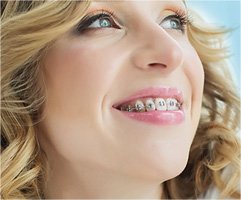Choosing between Invisalign and traditional braces for orthodontic treatment can be a significant decision. Both options have their unique benefits and considerations, and the best choice depends on your specific needs and lifestyle. In this ultimate guide, we’ll compare Invisalign and braces across various factors, including treatment costs, treatment experience, daily life, length of treatment, and more, to help you make an informed decision.
Treatment Costs
The cost of orthodontic treatment is often a primary consideration for patients. Generally, traditional braces tend to be less expensive than Invisalign. Braces typically cost between $3,000 and $7,000, depending on the complexity of the case and the duration of treatment. Invisalign, on the other hand, usually ranges from $4,000 to $8,000. The higher cost of Invisalign is due to the advanced technology used to create the custom aligners and the multiple sets of aligners required throughout the treatment.
However, it’s important to note that insurance coverage for orthodontic treatment varies. Many insurance plans that cover braces will also cover Invisalign, up to the same amount. It’s always a good idea to check with your insurance provider to understand your coverage options.
Treatment Experience
The treatment experience differs significantly between Invisalign and braces. Traditional braces consist of metal or ceramic brackets glued to the teeth and connected by wires and rubber bands. These braces are adjusted periodically by the orthodontist to gradually move the teeth into their desired positions. The process can involve some discomfort, particularly after adjustments, and the brackets and wires can cause irritation to the inside of the mouth.
In contrast, Invisalign treatment involves a series of clear, removable aligners that are custom-made to fit over your teeth. These aligners are replaced every one to two weeks to progressively move the teeth. One of the main advantages of Invisalign is that the aligners are virtually invisible, making them a discreet option. Additionally, since there are no metal components, there is less irritation and discomfort compared to traditional braces.
Daily Life with Each Appliance
Living with braces requires some adjustments to daily routines. Certain foods, such as hard, sticky, or chewy items, should be avoided as they can damage the braces. Oral hygiene also becomes more challenging, as food particles can easily get trapped around the brackets and wires, requiring diligent brushing and flossing.
Invisalign aligners are removable, which means you can take them out while eating, allowing you to enjoy all your favorite foods without restrictions. However, it’s crucial to brush your teeth and clean the aligners before reinserting them to maintain oral hygiene. The aligners should be worn for 20 to 22 hours a day for effective treatment, which means they should only be removed for eating, drinking (anything other than water), and cleaning.
Length of Treatment
The length of treatment varies depending on the complexity of the orthodontic issues and the chosen treatment method. On average, traditional braces are worn for 18 to 24 months, though more complex cases can take longer. Invisalign treatment duration is typically comparable, averaging between 12 to 18 months. However, minor corrections can sometimes be achieved in as little as six months with Invisalign.
One factor that can affect treatment length with Invisalign is compliance. Since the aligners are removable, it’s essential for patients to wear them as instructed by their orthodontist. Failing to wear the aligners for the recommended hours can prolong the treatment.
Aesthetics and Visibility
Aesthetics play a significant role in the choice between Invisalign and braces. Traditional metal braces are highly visible, which can be a concern for many patients, especially adults and teenagers who are conscious about their appearance. Ceramic braces offer a more discreet option, as they are tooth-colored and blend in better with the natural teeth, but they are still noticeable.
Invisalign aligners are virtually invisible, making them an attractive option for those who want a discreet orthodontic treatment. The clear plastic aligners fit snugly over the teeth and are hardly noticeable, allowing patients to smile confidently throughout their treatment.
Maintenance and Hygiene
Maintaining oral hygiene is crucial during orthodontic treatment to prevent cavities, gum disease, and other dental issues. With traditional braces, brushing and flossing can be more challenging due to the brackets and wires. Special tools, such as interdental brushes and floss threaders, are often needed to clean around the braces effectively.
Invisalign aligners make maintaining oral hygiene easier. Since the aligners are removable, you can brush and floss your teeth as usual without any obstructions. The aligners themselves also need regular cleaning to prevent buildup of bacteria and stains. Rinsing the aligners with lukewarm water and brushing them gently with a soft toothbrush is usually sufficient.
Comfort and Convenience
Comfort is another important consideration. Traditional braces can cause discomfort, especially after adjustments, and the brackets and wires can irritate the inside of the mouth. Orthodontic wax can help alleviate some of this irritation, but discomfort is often an unavoidable part of the process.
Invisalign aligners are generally more comfortable, as they are made from smooth plastic and do not have any sharp edges that can cause irritation. There may be some initial discomfort when switching to a new set of aligners, but this typically subsides within a few days.
Office Visits
Traditional braces require regular visits to the orthodontist for adjustments, typically every 4 to 8 weeks. These visits are necessary to tighten the wires and change the rubber bands, ensuring the braces continue to move the teeth as planned.
Invisalign treatment also requires regular check-ups, but these are usually less frequent, often every 6 to 8 weeks. During these visits, the orthodontist will check your progress and provide you with the next sets of aligners. Since there are no adjustments needed, the appointments are generally quicker.
Choosing between Invisalign and braces depends on various factors, including your treatment needs, lifestyle, and personal preferences. Traditional braces are a cost-effective and durable option that can handle a wide range of orthodontic issues, but they are more noticeable and can cause more discomfort. Invisalign offers a discreet and comfortable alternative, but it requires strict compliance and is generally more expensive. At Drs. Savage, Sabol & Visser, we are committed to helping you find the best treatment option for your specific needs. Whether you choose Invisalign or braces, our experienced team will guide you through the process to ensure you achieve a beautiful, healthy smile. If you have any questions or would like to schedule a consultation, please contact us.













